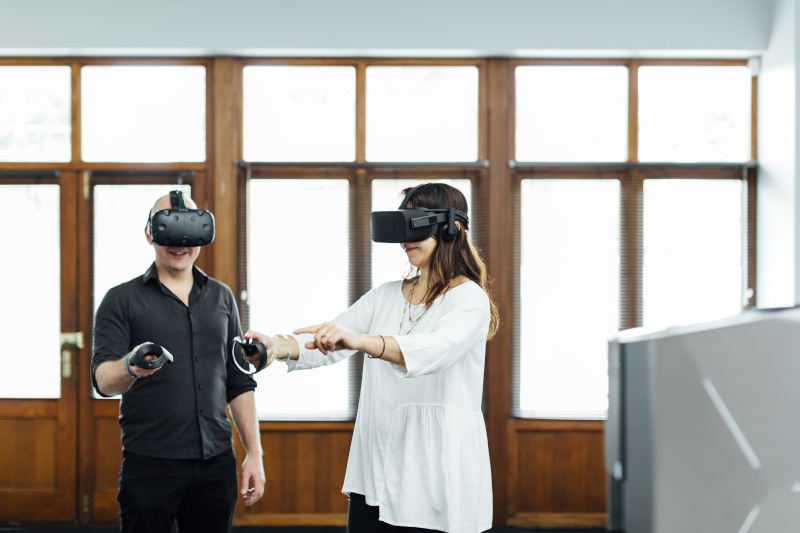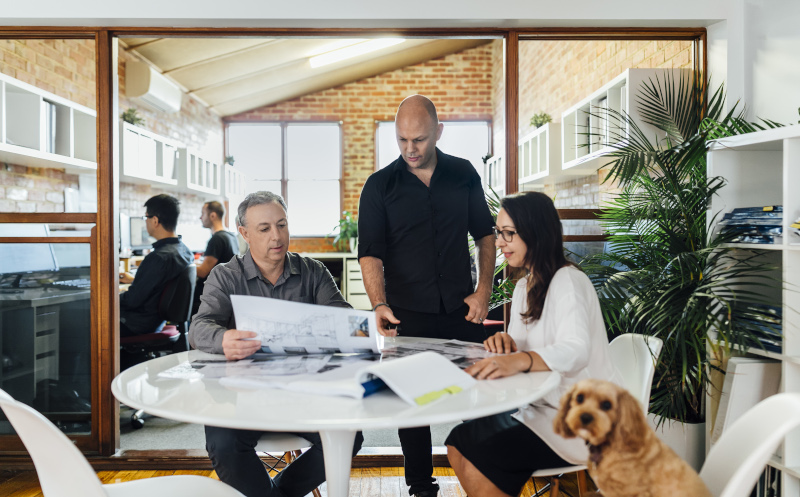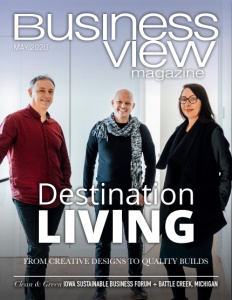Destination Living
From creative designs to quality builds
Business View Oceania interviews Mike Costa, Grace Patane, and Alex Hill of Destination Living for our focus on Luxury Home Construction in Australia
The Destination Living team has over two decades of experience in running both a creative architecture practice and a custom-building company, all based in Melbourne. Over that time, they have streamlined to better meet the needs of clients, creating a simple, unified and collaborative process from the initial brief to completion of stunning, beautifully designed residences. The overall result is a full-service solution for creating luxury, custom-built homes by a Melbourne collective of residential architects, interior designers and builders who approach every project with creative and pragmatic thinking.
Mike Costa, co-founder of Destination Living, started the initial program in 2010. He recalls, “Everything morphed from there with a lot added to the singular vision I had at the very beginning. Before that I ran a large building company in Melbourne that was one of the top 15 builders by volume at one point. Having run the business with a large number of people, the biggest frustration I had was the delivery of the build in the field. I had a building partner that worked in the field and I was so frustrated about the quality and the management of the things that went on in the construction area. To the point that I got quite disillusioned that they couldn’t produce the quality of product.

“So while managing the company, I decided to take a couple of projects where I live and manage them personally myself. Doing that taught me that it really comes down to the person who manages the site. Irrespective of whatever management is above them, the person who runs the site pretty well dictates and controls the outcome of the site. By doing that I found that the quality of my sites was pristine – I’d make sure all the trades and suppliers kept my sites immaculate. These were the same trades and suppliers that my team was using and their sites looked like a bombshell had gone off. The problem for all building companies is the minute you begin to grow in size at some point you need to choose to no longer be the builder and just be a business owner with employees who don’t have anywhere near the level of care or responsibility that you have on a building site. Immediately that accountability is completely disintegrated. And that’s what I found. So within two weeks of that ‘aha’ moment, I notified my business partner that I was going to pack up and I left the business and we set up Destination Living.”
The premise of Destination Living was always about having an accountable person in the key roles that are performed from the start to end of design and building of the home. Finding architects with the skills and quality and responsibility was challenging. But once they had a team on board that appreciated the art of designing a home, the results were amazing. From the beginning, the business mantra was to create and deliver a phenomenal product. And today, no matter what the project is, they still hold that yardstick up against it and ask, is what we’re doing producing the very best design?
Co-founder, Grace Patane, explains, “It’s about having the most skilled people in a given area working to their strengths and providing support to wherever the weaknesses are and then shoring that up. With an architect, a weakness may be that they don’t know how to design to cost because that’s not the process by which architects in our market work. So we implement cost measures along the way so the clients and the architects and the design chain know the price. Whereas, traditionally when you undertake an architectural design, you end up designing and specifying everything first. And if you do cost it along the way, it’s usually not an accurate representation.”
According to Costa, “What it comes back to is having the key person in the role that has an ownership stake. So having Alex Hill, our Architectural Director, on board with an ownership stake in the business is critical for our future plans. Grace, who runs the interior design, has an ownership stake. Every project we bring to market now speaks to what we are and what service we offer that nobody else can do. Because we’re bringing together an architect, a designer and a builder singularly on a project. We are an architectural practice but we have the building program infused and we educate our builders. We select the builder who will be physically doing the build – they’re our partners. They come in during the design phase and participate. They then bring all of their trades and suppliers into our architectural program half way through the process. We’re looking to recreate that element of 120 years ago where you have an artisan builder working hand in hand with an architect. We fully support our builders and we’ve never had a builder to date that didn’t want to continue working with us.”
Destination Living operates in Melbourne and does some coastal work – their high-end homes seem to attract that clientele. But it’s a scalable model. Costa notes, “We could actually go in and set up an office immediately to provide an infrastructure; have an architect come on board to run that office; and we have builders that are geographically located in the northeastern suburbs and the southern suburbs areas close to the projects. It makes a more efficient business for them if they don’t have to travel too far. We get approached by builders all the time and when we have a project in an area, we start months ahead and look for a group of builders that we can bring on board if we need to and then bring them into our business model.”

Eighty or ninety percent of the firm’s projects are knock-downs and that’s purely from a client-driven process. Alex Hill, Architectural Director, clarifies, “Once you drill into what a client wants and is trying to achieve, then what you end up with is either a compromised design which possibly has a lot more unknowns from a budget perspective, or if they knock down they obviously get to start afresh. So most of them end up choosing that path whether they came in to do a new house or a renovation. Green building from our perspective is just good design. Putting windows in the right spot; shading windows when they need to be shaded; providing natural ventilation – all those key design elements is Architecture 101, which if you aren’t doing right, you’re not doing quality architecture. Everything beyond that in terms of solar panels, solar batteries, insulated wall systems are all add-ons. So for us it’s start with the basics first and then improve from there.”
Technology is at the heart of the process as far as making it easier for the consumer and delivering a better product. Destination Living implemented VR three years ago into their system and that’s how they explain and deliver architecture to the client. From a design standpoint, VR has been invaluable for giving the client a full understanding and experience of the space, what they’ll see from particular angles. “It gives this love and excitement for the design,” says Patane, “and getting the clients up to speed and communicating with the architects early on. For the builders, everyone on site is already using 3D models to see the intention of the architect or what the interior designer wants.”
Costa adds, “But we’re really excited about AI, where we can superimpose the design model when you’re physically onsite. Or from a construction point of view, we can have codes that relate to specific details of how we want something built and then they can use their phone or iPad to see that 3D detail to review. We’re planning on implementing that in the next year, as soon as we know that the interface is user friendly. When we brought in immersive VR, we thought it would be great from a client’s perspective to visualize spaces but it’s actually been incredibly valuable for the design team. You can put the goggles on and analyze in 3D every single viewpoint of the house. From the front door all the way through, the garden, see the water in the pool when you’re lying in bed. It really gives the client a great understanding of the quality design and the details.”
Having been an architect and a builder and back to an architect, Hill has found that in the residential space in Australia there are not many quality residential buildings available on scale. He believes, “There are obviously people who can afford design and therefore the architectural result and what I feel we’ve been able to achieve here is to actually integrate a building in an architectural model where ultimately the client gets the greater end result. Our homes are all unique and represent quality, not a signature Destination Living brand or look, as such. It’s not architecture, it’s art that incorporates good design, which ultimately should improve the way our clients enjoy everyday life.”
Patane sums it up well, “I get really excited by the product we produce. Which is a result of the process and the people that we work with in the organisation. At our heart, it is about designing and delivering the very best product for the client. Typically, you equate good design with a really top-heavy cost that’s a bit elusive but I’ve always felt that there’s no excuse for bad design. No matter what the price point. I love that we deliver well-designed, well-built homes and each one is individual and reflects what’s most important to our clients.”
AT A GLANCE
Destination Living
What: Full-service design and build luxury, custom homes.
Where: East Ivanhoe and Brighton (suburbs of Melbourne in Victoria), Australia
Website: www.destinationliving.com.au


